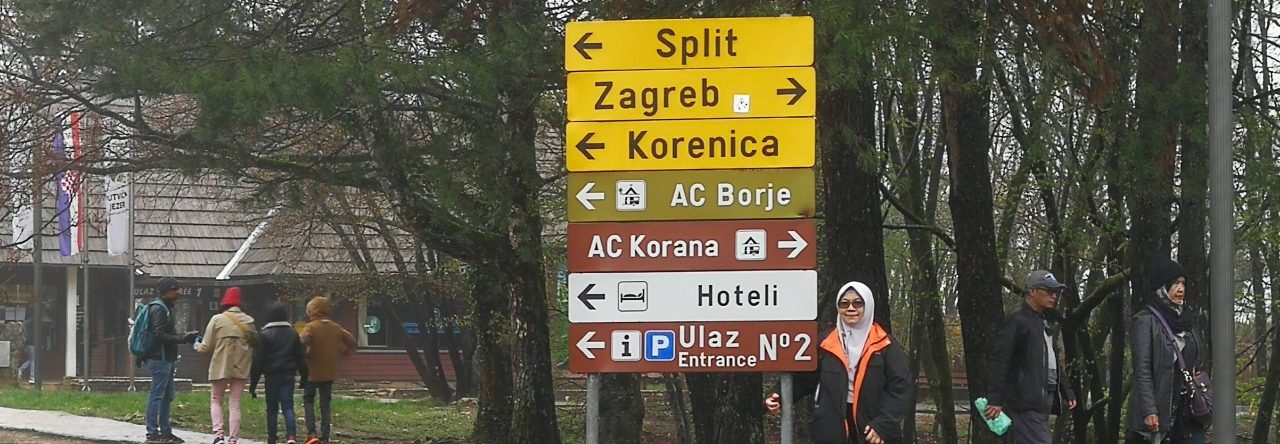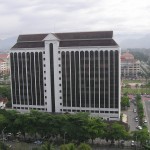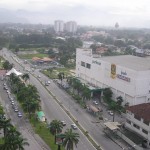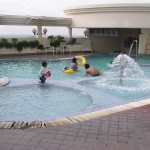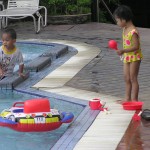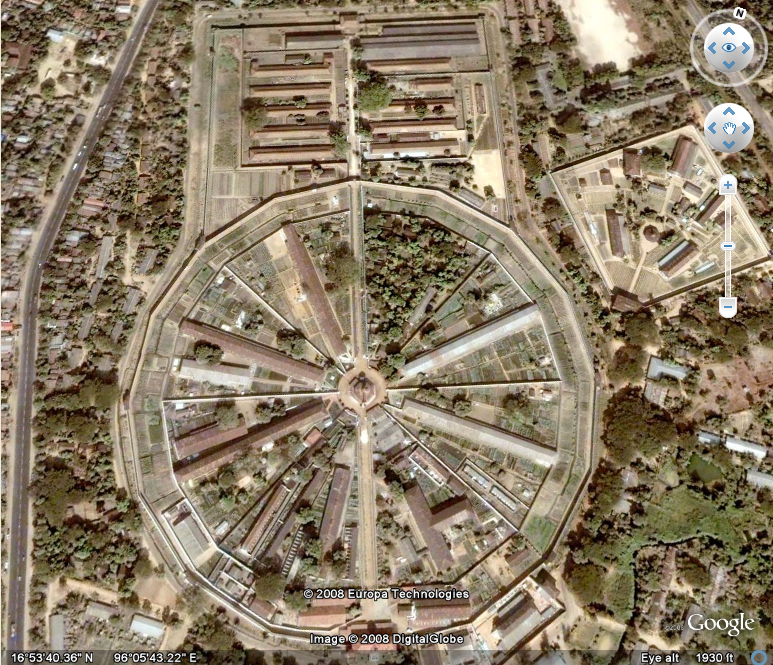We continued the journey to the north and stopped for Maghrib/Isyak prayers and dinner at a rest area along the highway somewhere near Hatyai. After that it was a long journey along scenic coastal routes and provinces like Nakhon Si Thammarat, Surat Thani (gateway to Koh Samui islands) and Chumpon, but alas we could not enjoy it. It was night time and dark outside. Most were sleeping in the fancy and comfy of the double decker. The bus stopped for fajar prayer at Petchaburi. Continued and stopped again for breakfast somewhere near Ratchaburi, at the outskirt of Bangkok. Entering Bangkok during morning rush hour was a hair-rising experience. Our first place to visit is Floating Market. They had many floating markets around Bangkok, but this one was the most original and most famous one, said Matlee. I could not remember the name of this market, but tour buses of different colors and shapes were aplenty and fighting for the limited parking space at the entrance of the floating market.
From here, we got on the bus and traveled south of Bangkok to the vibrant city of Pattaya. This was my second trip to this city, the first one being a business trip in 1999 to Rayong — Thailand petrochemical hub, equivalent to Malaysia’s Kerteh in Terengganu –to visit oil refinery and aromatics plant on business matter. We took a turn for a short visit to Pattaya, then.
Pattaya aptly fits “the city never sleeps” tag, as daytime is full of office workers, and nighttime is full of different kind of workers in entertainment business. There is a long and very clean beach with easy access to food, transport and places to stay, which attracts tourists from the globe. Some come here to remember, most come to forget.
Back track a bit. Before reaching Pattaya we stopped at a big zoo where tigers, elephants and crocodiles and many more our fellow creatures were kept. They were long taken away from their natural habitat and human effort by creating an animal farm or zoo to simulate actual living condition did not work either. They must be returned to the wild. These creatures were without emotion when they performed to the human crowd. There are some pixs on this also.
From Pattaya, we moved north along main highway to Chiangmai, passing by towns like Nakhon Sawan, Tak and Lampang. I told you it is an organized group tour so I did not have freedom at the itinerary. But I have some pixs on Lampang where we stopped for solat at Masjid AlFalak there. I also have some pixs on Ayutthaya — an ancient reconstructed city — on the way back from Chiangmai later. So keep following the upcoming posts.
The rest of Bangkok/Pattaya pixs are here.
